Australia produces more than half of the world’s raw lithium, but each tonne costs 2.2 million litres of water to produce. In the world’s driest inhabited continent, sustainable extraction methods are vital.
As global demand for green energy storage and electric vehicles soars, questions have been raised about the responsible mining of lithium, the so-called “white oil” that is often thought of as the key to net zero.
That’s because lithium-ion batteries have the ability to store much more energy in the same amount of space than a conventional alkaline battery, making them ideal candidates for everything from smartphones to grid-level energy storage solutions.
The chemical composition of electric vehicle (EV) and non-EV batteries varies, but lithium is included in all formulas. Recent advances in lithium-ion batteries have been so transformational that the scientists behind them won the 2019 Nobel Prize in Chemistry.
Global lithium production surpassed 100,000 t for the first time in 2021, quadrupling over the course of a decade.
To put the increase in demand in context, in 2010, ceramics and glass accounted for the largest share of global lithium consumption at 31 per cent, owing largely to modern glass-ceramic cooktops, where lithium carbonate increases strength and reduces thermal expansion.
The metal is also used to make lubricant greases for the transport, steel and aviation industries.
The World Economic Forum forecasts that demand will reach 1.5 million t of lithium carbonate equivalent (LCE) by 2025 – tripling from the amount produced in 2021 – and will rise to more than three million tonnes by 2030.
A recent McKinsey report found that demand for lithium-based power will be in line with the growth of the electric vehicle market, noting that electric vehicle manufacturer Tesla has projected that it will need approximately 1000 kt of LCE per year by 2030, some 16 times its 2022 needs and 30 per cent more than the world currently produces.
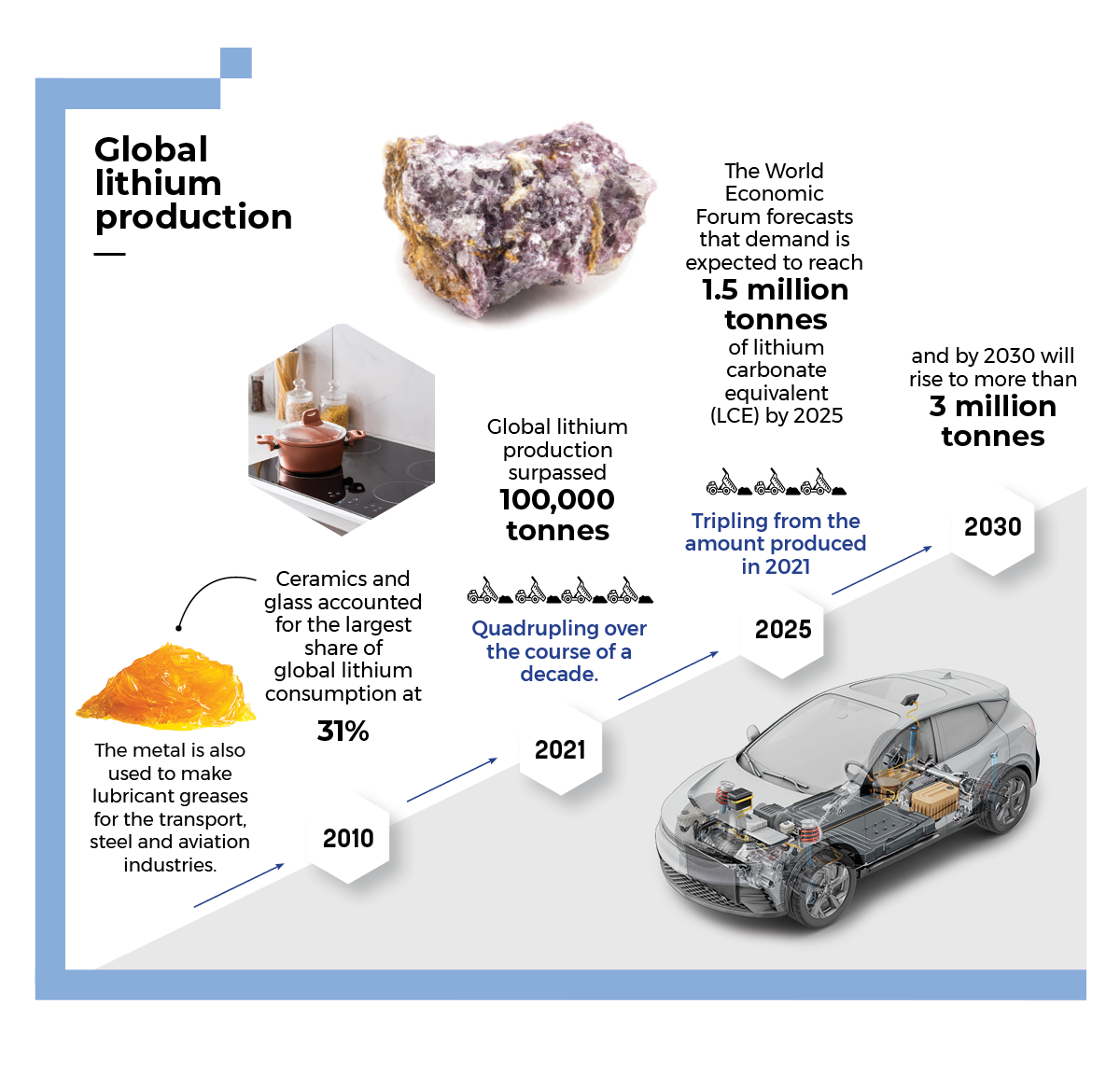
The battery of a Tesla Model S uses around 12 kg of lithium, but Tesla is no longer the largest manufacturer of EVs. That honour goes to Chinese manufacturer BYD, which last year overtook Elon Musk’s company by capturing just over one-fifth of global market share.
Led by these two giants, the global EV market alone is expected to grow annually by 26 per cent through 2030.
While EVs dominate much of the discussion around renewables, lithium-ion as a grid-level battery solution is also growing at a rapid pace, with the market projected to quadruple from US$7.72 billion in 2022 to $30.95 billion by 2029.
Earth impact
Around 90 per cent of the world’s raw lithium comes from just three countries: Australia, Chile and China.
Chile holds the world’s largest lithium reserves, but Australia, which holds the second largest amount, currently produces 52 per cent of the world’s supply of the metal. Australia is also the world’s largest producer of spodumene, the base material for lithium hydroxide and lithium carbonate.
China, the third largest global producer, receives more than 90 per cent of Australian lithium exports. In addition to developing its domestic supply, Chinese companies have acquired around $5.6 billion worth of lithium assets in other countries, including Australia, and hosts around 60 per cent of the global lithium refining capacity for batteries.
However, the relatively concentrated supply of the metal alongside the explosive demand for production means environmental risks are high and regulation safeguards often lag far behind.
In order to extract lithium in South America, miners drill a hole in salt flats and pump salty, mineral-rich brine to the surface. The resulting ponds take several months to evaporate, leaving a mixture of manganese, potassium, borax and lithium salts.
After a process of filtration and placement in further evaporation pools, which lasts for around 12 to 18 months, the mixture is filtered sufficiently so that lithium carbonate can be extracted.
It’s estimated that this uses around 21 million litres of water per day, and that each tonne of lithium requires approximately 2.2 million litres to produce.
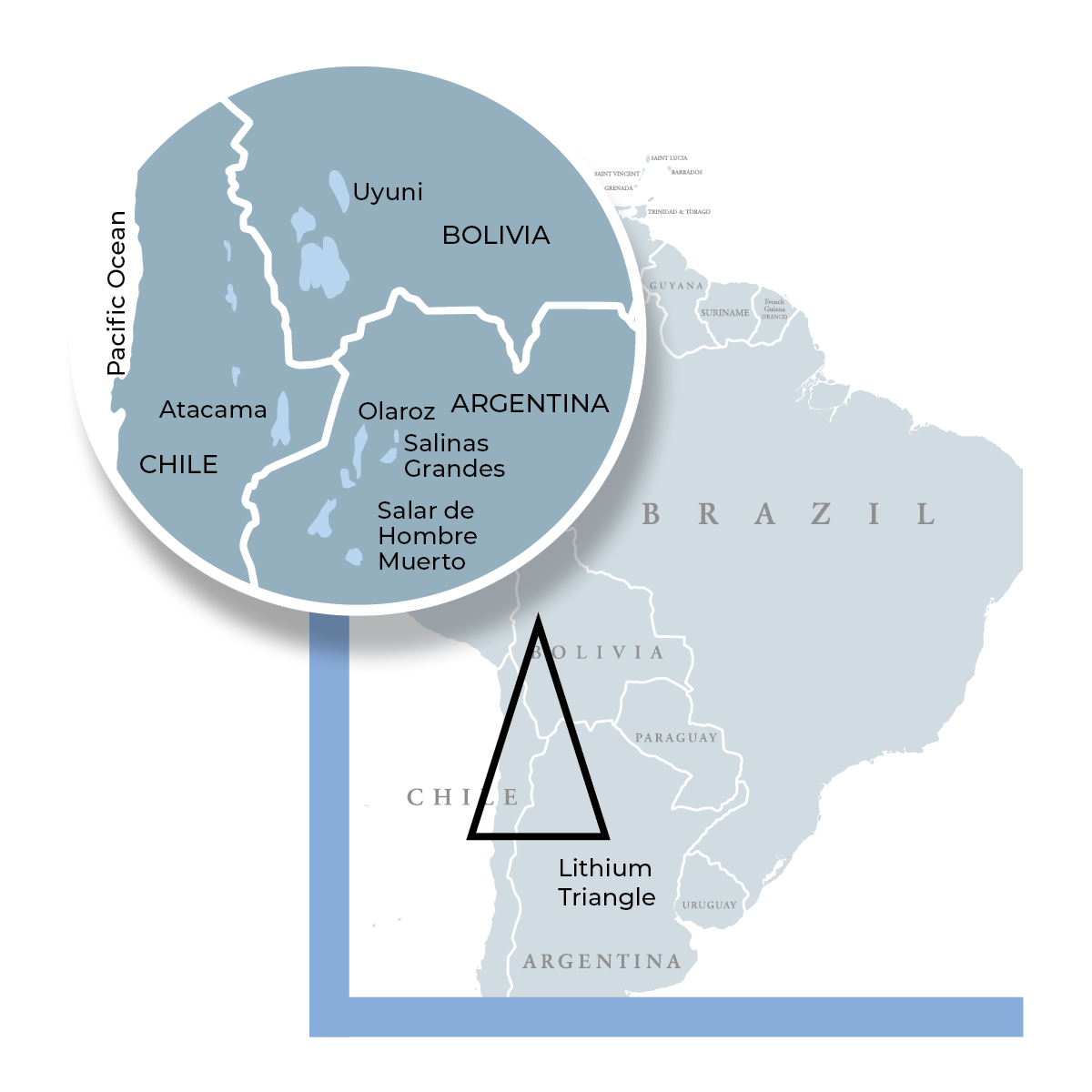
Among the highest grades of lithium globally, Australia’s lithium reserves are found primarily in Western Australia, although researchers have recently found untapped deposits in Queensland, New South Wales and Victoria.
Unlike South America, Australian lithium comes from hard-rock mines for the mineral spodumene, similar to those used for iron ore or nickel. The spodumene is then refined into either lithium hydroxide or lithium carbonate, with hydroxide preferred as it is cheaper and less complex than refining carbonate.
The South American process, on the other hand, tends to be converted into lithium carbonate, while China uses both extraction methods. Australia’s hard-rock extraction process is less resource-intensive than brines, but still poses significant environmental challenges.
Thirsty work
Lucy Baker FIEAust CPEng, a partner in global sustainability advisory firm ERM and a member of Engineers Australia’s Environmental College, said that lithium extractors operating in Australia still need to be mindful of groundwater supply.
“Water requirements for Australian lithium mines are high due to a combination of ore processing, water supply for the labour in remote areas and various mining buildings, and for use in dust suppression,” Baker told create.
Water requirements can be met through a combination of methods, including potable water from existing pipelines, processing plant water recycling, tailings storage facility water recycling for dust suppression and washdown, and groundwater mining of the mine pit to enable dry-floor mining below the natural groundwater level.
Additionally, Baker said, to protect the hydrology and environmental values of Australian water resources, the mining sector can:
- Implement drainage management strategies to separate freshwater from saline water runoff
- Use hydraulic models to simulate flood flows to prevent inundation and apply mitigation
- Capture potentially contaminated surface water in special dams
One of Australia’s largest mine operators, Core Lithium, which operates the Finniss Lithium Operation in the Northern Territory, said that its first operational wet season review in 2022–23 resulted in improvements to its water management infrastructure and processes.
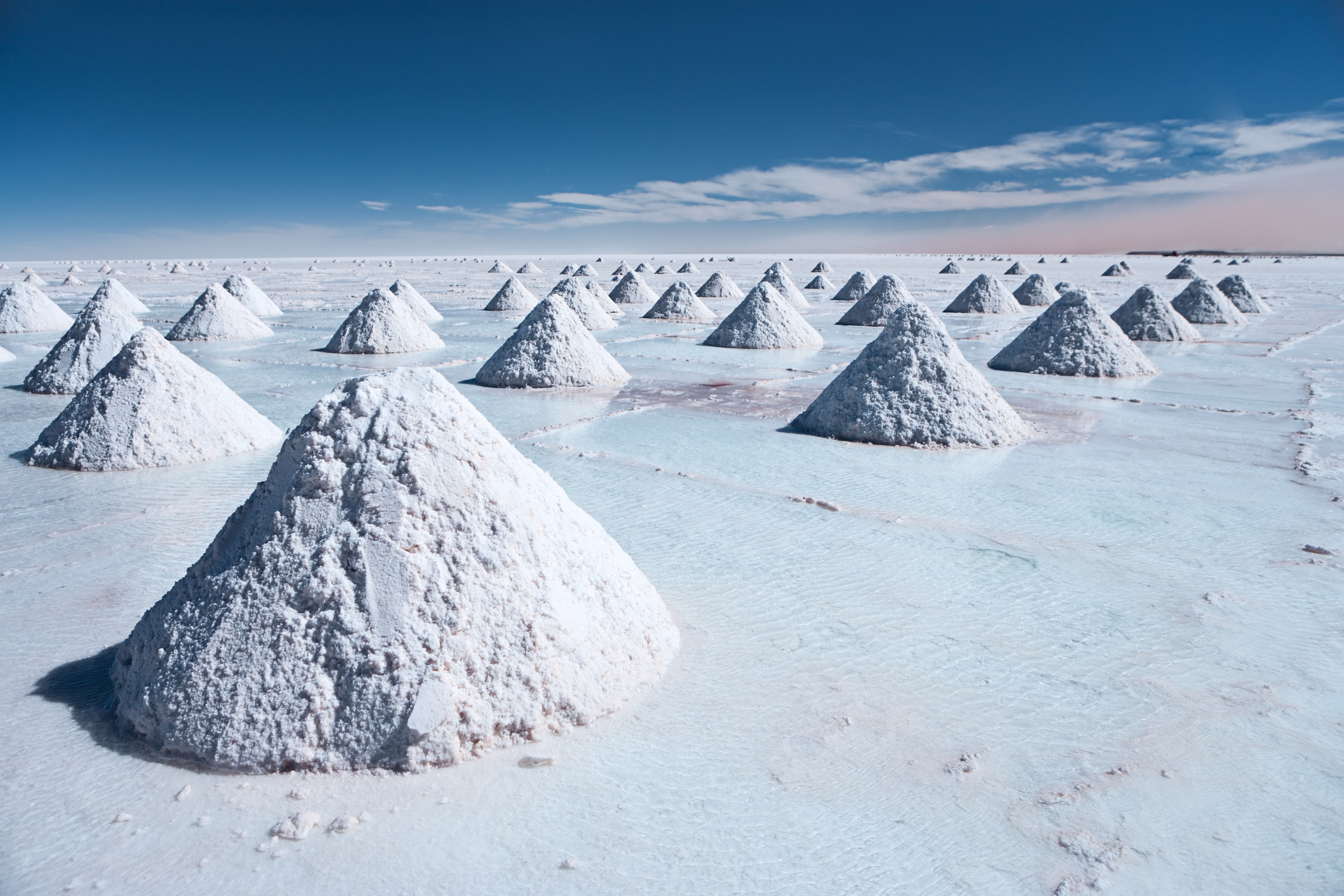
“We also trialled new methods of using drone technology in water monitoring and treatment practices to reduce loading in sediment basin water,” the company said. “We have increased our capital spend to improve the efficiency of our sediment basins and increase the available storage capacity of the mine water dams.
“Core [Lithium] is also installing an additional network of pumps and pipes to proactively manage and distribute water onsite to optimal storage locations.”
Baker also believes that there is an opportunity to apply guidelines for lithium mining across Australia, as well as adopting global environmental standards to further protect our water resources.
Green, not clean
Outside of water degradation, there are a host of other environmental considerations for Australian lithium miners, many of which are similar to more established activities such as iron ore extraction.

“The best approach to minimise impacts to clearing native vegetation is to avoid those areas,” Baker said. “Where these areas cannot be avoided, the next best approach is to protect terrestrial fauna so that biological diversity and ecological integrity are maintained through offsets and adequate management practices
“Also there is a need to consider the water supply for the mining operation while maintaining downstream flows in the surrounding areas. The consultation needs to continue with the community and Aboriginal community to ensure that the social and cultural environment is protected.
“Lithium mining uses a lot of power, and there are plenty of opportunities to use local renewable energy to ensure a net zero target is achieved for lithium mining.”
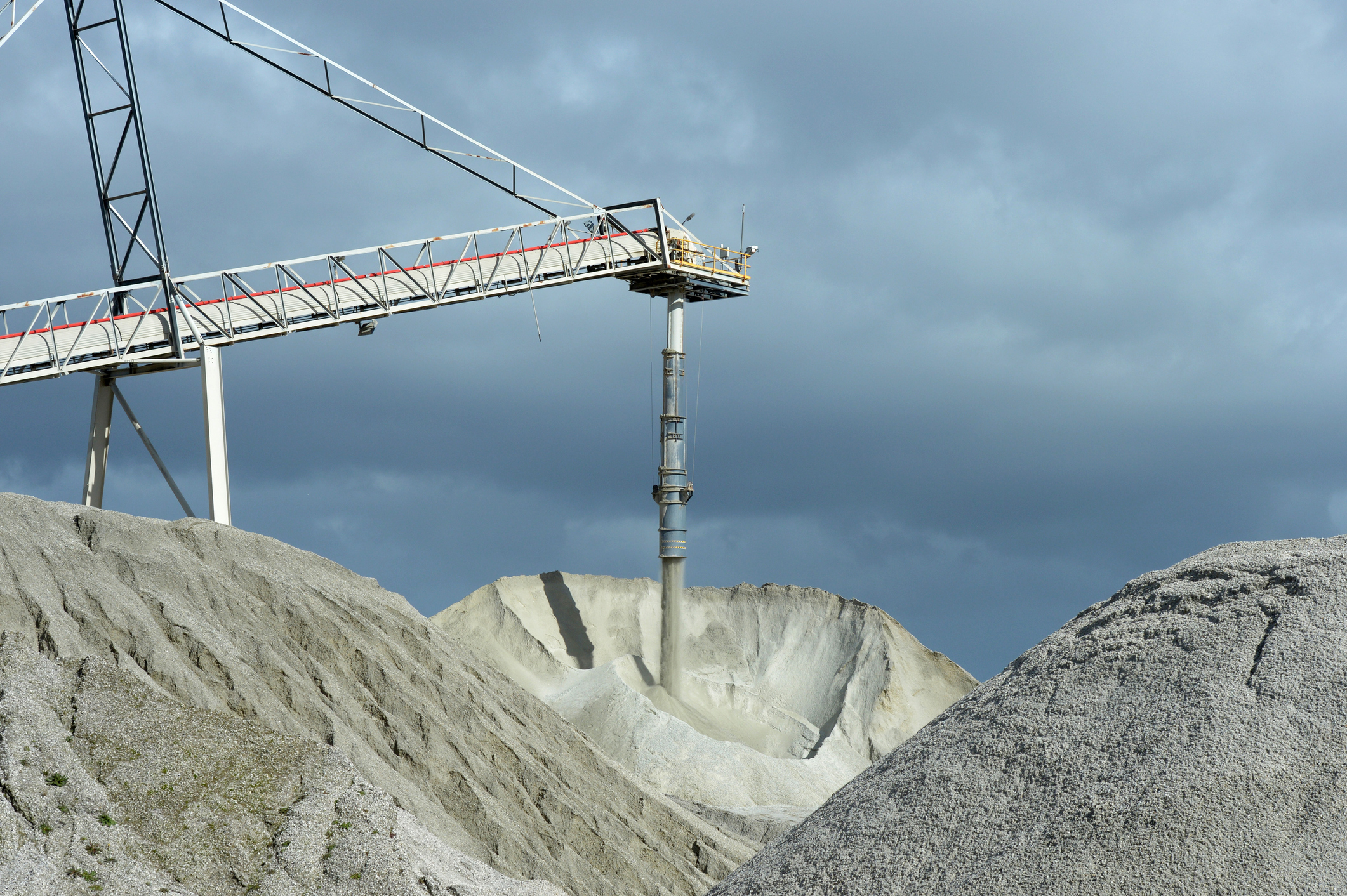
One of the most common methods for extracting spodumene involves a roasting process, which requires both large quantities of sulphuric acid and significant amounts of energy.
The end product also sees a large amount of slag waste, which needs to be disposed of, something that requires robust regulation and monitoring to avoid causing pollution.
A 2020 study from UK-based commodities consultancy Roskill (now part of Wood Mackenzie) projected that by 2030 mineral concentrate will be responsible for a far larger carbon emission footprint than brine lithium.
It found that emissions from production of mineral concentrate are around three times that of brine extraction – 9.6 t of carbon dioxide per tonne compared to 2.8 t carbon dioxide per tonne – with refining emissions comprising up to 80 per cent of those total carbon emissions from mineral concentrate.
“To compete from a CO2 standpoint with low-emission brine producers, mineral concentrate producers must transition away from a reliance on coal-intense Chinese concentrate refining capacity,” the firm’s analysts said.
“Over the next decade, Roskill expects improved efficiencies in mineral processing and refining techniques, a great use of zero-carbon power sources in grid energy mixes and increased geographic integration between mines and refineries to benefit the mineral concentrate sector, helping to narrow the CO2 gap to brine producers.”
Net zero opportunities
Baker said that alternative technology needs to be considered to improve the carbon footprint of lithium extraction and processing.
One critical step to relying on lithium to secure a sustainable future is the adoption of a circular economy to ease the pressure on production.
“This is one area that we are still falling short on around the world,” she said. “Lithium-based waste is difficult to ship, as damaged cells can be a dangerous good.”
Opportunities to develop effective recycling strategies for lithium batteries must be close to where they are being used.
At present, according to the CSIRO, of the 3300 t of lithium-ion battery waste Australians produce each year, only 10 per cent is recycled.
“Australia needs to set up recycling plants, adjacent to populated areas, with adequate buffers to reduce the fire risks associated with these facilities,” Baker said.
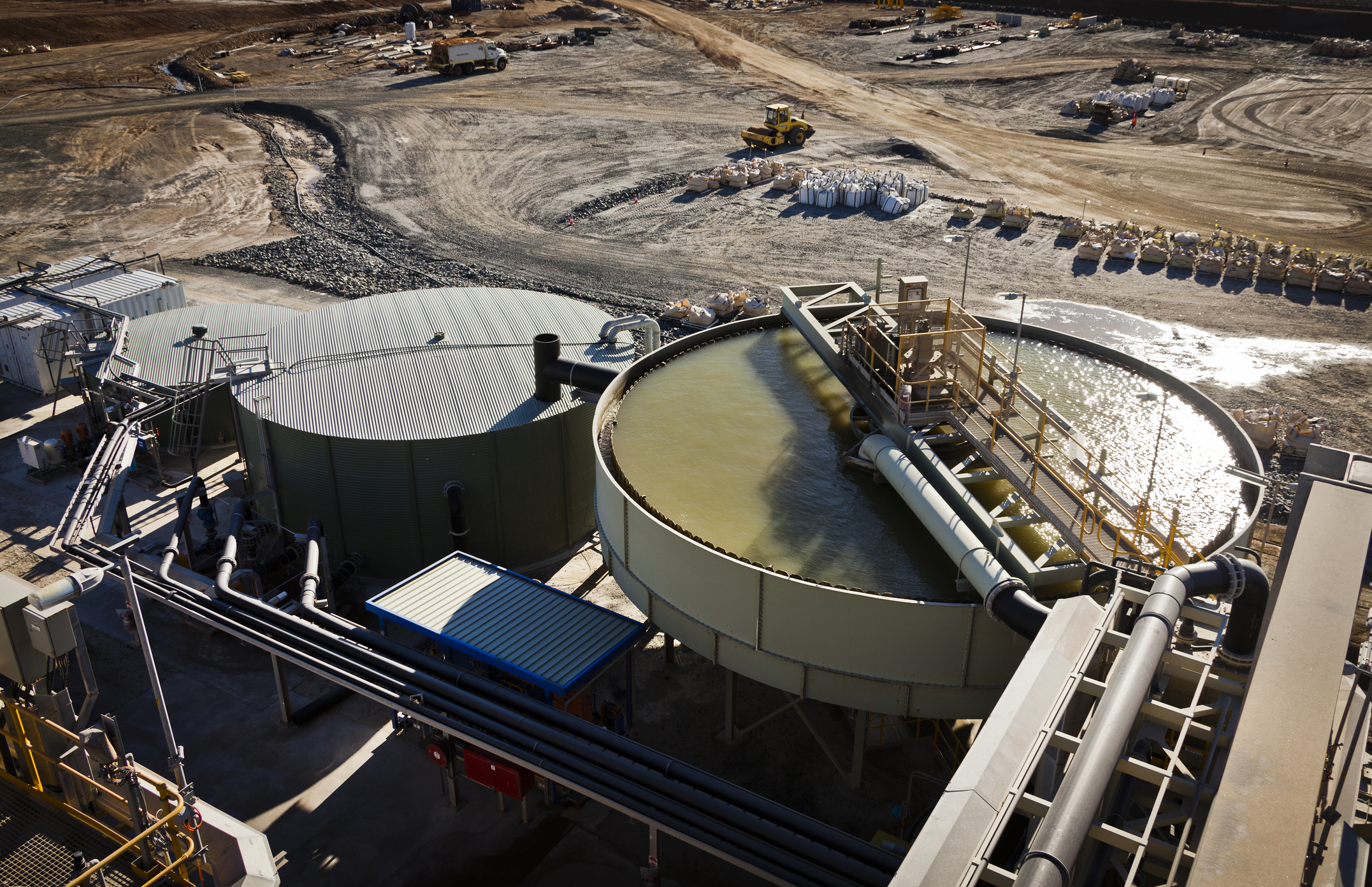
McKinsey said that, by 2030, raw materials are expected to constitute “25 to 40 per cent of battery Scope 3 emissions”, and both battery and EV manufacturers will be striving to meet ambitious decarbonisation targets. To combat the emissions from hard-rock lithium, refineries can be built close to the source of extraction to shorten supply chains and cut back on transportation emissions.
Furthermore, electrification of mining equipment can also help to reduce the amount of carbon produced from lithium mining, while improved renewable energy mixes on the grid will help to lower emissions intensity. A future where plants use green hydrogen for the spodumene roasting process could provide a real boost to net zero targets.
For all of the challenges presented by digging for this “white oil”, experts argue that ramping up lithium production is likely to result in a net reduction of overall mining – and therefore our reliance on fossil fuels – as we reduce the five to eight billion tonnes of waste rock produced each year just to get coal – and the subsequent emissions that come from burning it.



